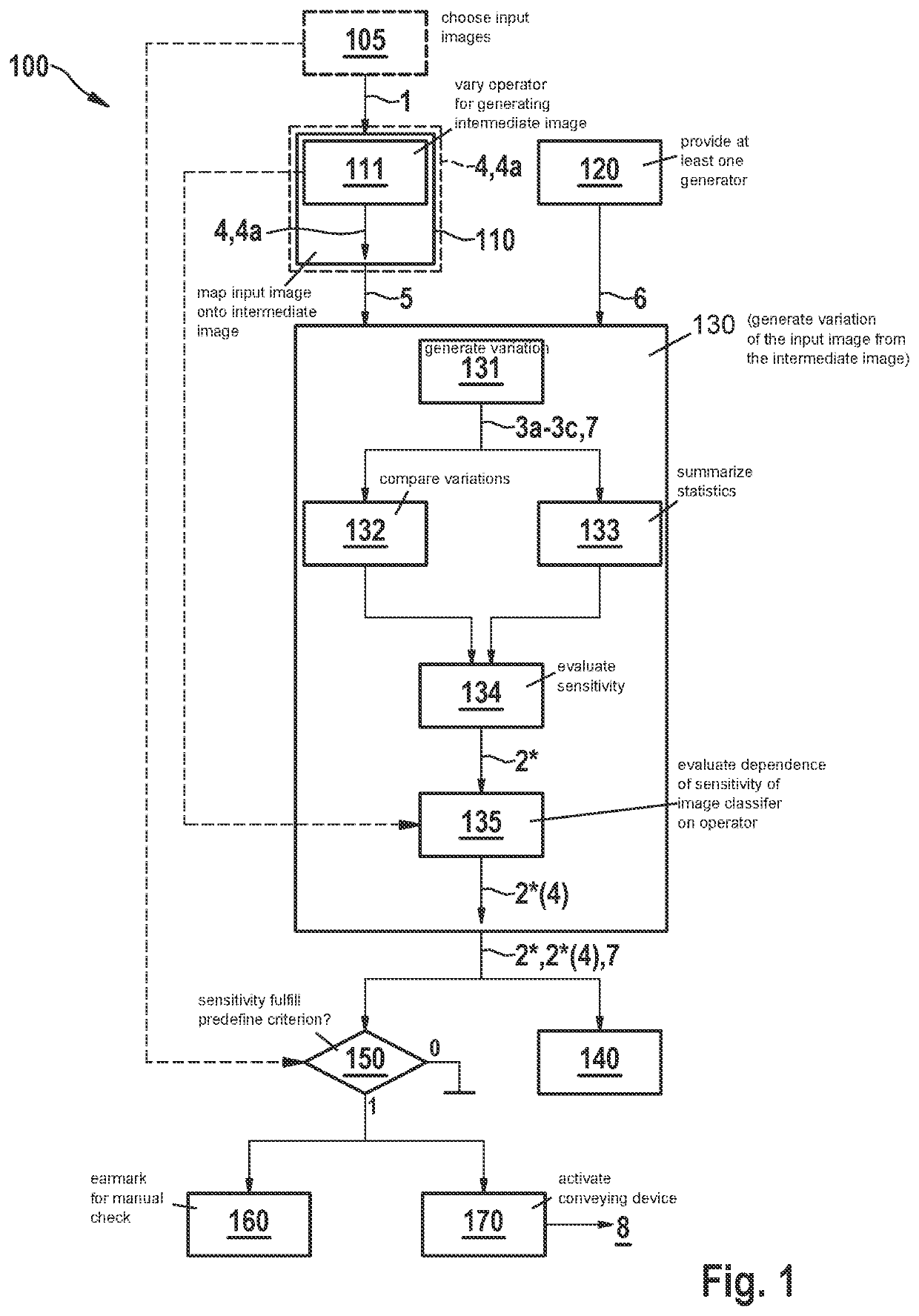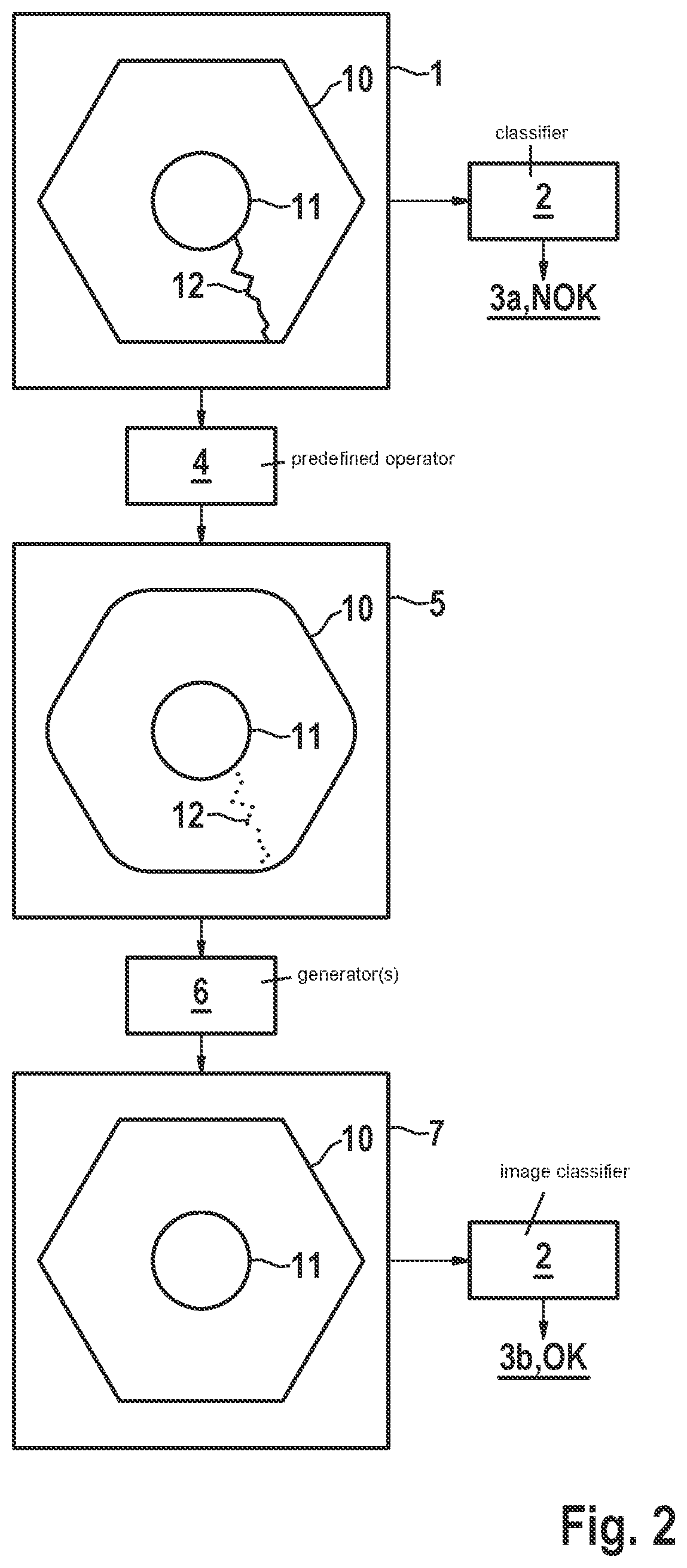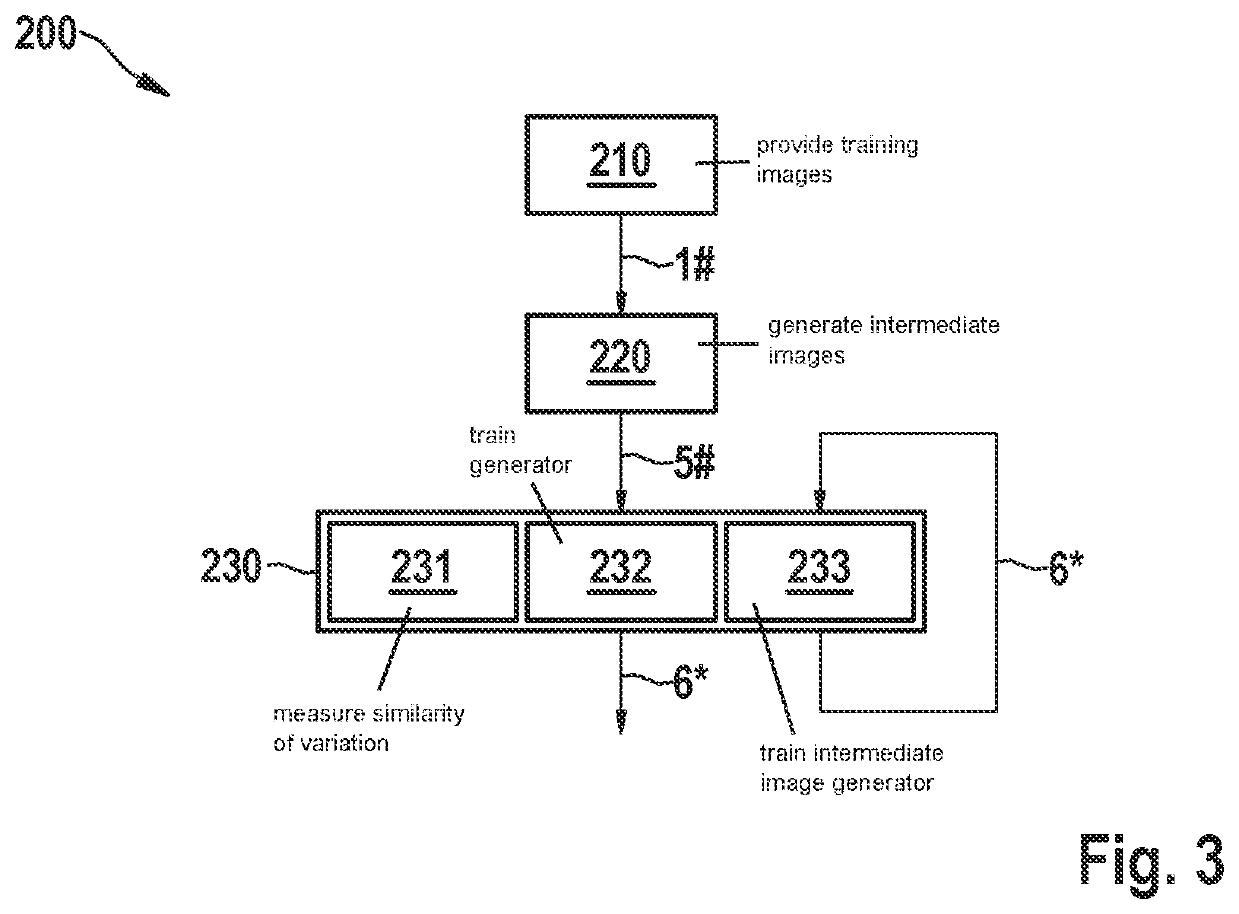Measuring the sensitivity of image classifiers to modifications of the input image
- Summary
- Abstract
- Description
- Claims
- Application Information
AI Technical Summary
Benefits of technology
Problems solved by technology
Method used
Image
Examples
Embodiment Construction
[0049]FIG. 1 is a schematic flow chart of an exemplary embodiment of method 100 for measuring the sensitivity 2* of an image classifier 2 to modifications of input image 1. In accordance with step 105, in particular images of nominally identical products produced in series may be chosen as input images 1, for example. Image classifier 2 may be trained for example to classify the input images 1 into classes 3a-3c of a predefined classification, which represent a quality assessment of the respective product.
[0050]In step 110, input image 1 is mapped by predefined operator 4, which may be in particular a trained intermediate image generator 4a, onto an intermediate image 5. This intermediate image 5 has a lower information content and / or a poorer signal-to-noise ratio in comparison to input image 1. In step 120, at least one generator 6 is provided. This generator 6 is trained to generate realistic images, which image classifier 2 assigns to a specific class 3a-3c of the predefined cla...
PUM
 Login to View More
Login to View More Abstract
Description
Claims
Application Information
 Login to View More
Login to View More - R&D
- Intellectual Property
- Life Sciences
- Materials
- Tech Scout
- Unparalleled Data Quality
- Higher Quality Content
- 60% Fewer Hallucinations
Browse by: Latest US Patents, China's latest patents, Technical Efficacy Thesaurus, Application Domain, Technology Topic, Popular Technical Reports.
© 2025 PatSnap. All rights reserved.Legal|Privacy policy|Modern Slavery Act Transparency Statement|Sitemap|About US| Contact US: help@patsnap.com



